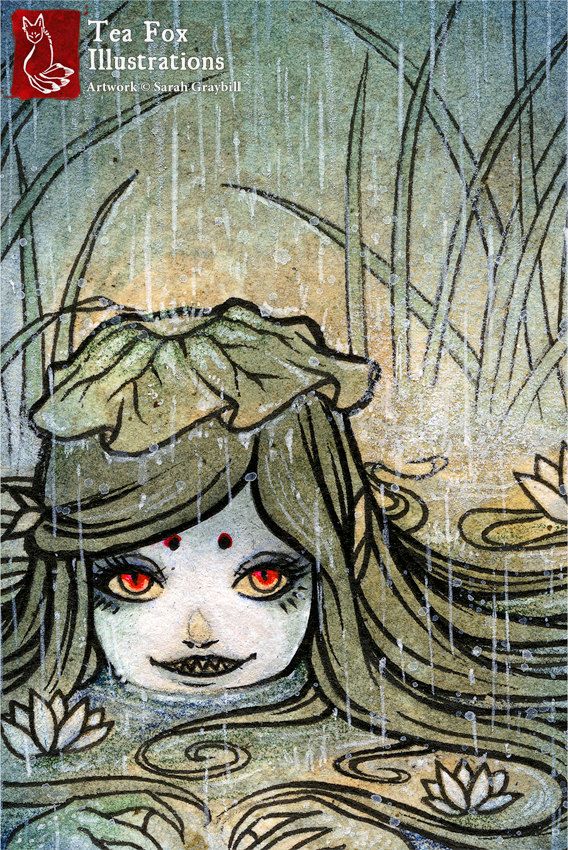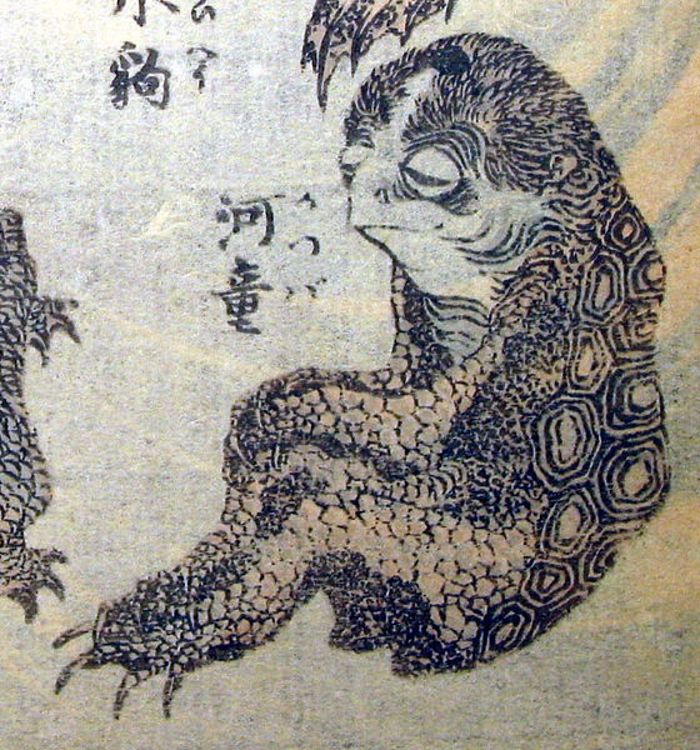Japanese Folklore: Kappa
Kappa or “Son of the river”
A Kappa is a funny chimera, its true appearance is still unknown, a bit human a bit monkey-like. But most of the times it is depicted with the face of a tortoise with a yellow beak. From tortoises it borrowed the shell and the scaly skin with its watery colors, usually of a nice seaweed-green. On the head it carries a lotus leaf containing water, and it is from this water that it draws its powers. This is the Kappa (河童) or, if you like, you could call it Kawatarō ( “boy of the river”) or Kawako (“son of the river”), you will make him happy.

Born as a warning to scare kids away from the dangers lurking into deep waters, they are Shintoist Suijin (水神 “water god”). However, generally speaking these mythological figures are one of the many Yōkai (demons or phantoms) of the Nipponic folklore.
As much as its appearance may arouse your mockery, the Kappa is not the type to make fun of because it is a mischievous and naughty creature. In the past it was said that he abducted children because it is a glutton for them, but didn’t say no to adults bowels. They are always ready to do mischievous pranks from pulling the kimono of young girls to stealing the harvest of farmers.

Even if it is naughty and somewhat dangerous, formalities are a good way to be safe with it. That’s right, it is a very polite creature even if it seems hard to believe. The Kappa loves good manners and if you make him do a good, deep bow, it will spill its magical water and lose all its powers. The Kappa is also a creature always ready to stick to its word and to give rewards. If you find a Kappa in difficulty help it by pouring water on the leaf on its head, it will be indebted to you for life! Maybe you would like to have one of them as a friend? Well, I said nothing but Kappa love cucumbers! Yes! Offer this fresh vegetables to a Kappa and it will reward you with its friendship. And well, who wouldn’t like to have one as a friend nowadays?
Usually, they live in lakes and deep ponds and this is why they are skilled swimmers. But here we must say “kappa no kawa nagare”, “a kappa drowing in a river” , because even the most skilled make mistakes, so never give up!

Nowadays they are not as feared as in the past, they have become somewhat more “Kawaii” and a great number of animes take a cue from them. In Marmalade Boy the two main characters Miki and Yu have a Kappa plush as their mascot; different Pokemons were inspired to this creature and Kappa no Coo to Natsuyasumi (Summer days with Coo) is the story of the friendship between a kid of our days and a Kappa looking for its fellows.
Even J.K. Rowlong wrote about this mythological creature in her book Fantastic beasts: where to find them. And if you are interested in seeing a real one, or at least what is left of it, you would like to go to Asakusa, Tokyo district. In the Buddhist temple Sogen-ji you can worship its remains.
photo credit: manganews, wikipedia, facebook.com/TeaFoxIllustrations
Share this:
- Click to share on Facebook (Opens in new window)
- Click to share on Twitter (Opens in new window)
- Click to share on Tumblr (Opens in new window)
- Click to share on Pinterest (Opens in new window)
- Click to share on Telegram (Opens in new window)
- Click to share on WhatsApp (Opens in new window)
- Click to share on Reddit (Opens in new window)
- Click to print (Opens in new window)






